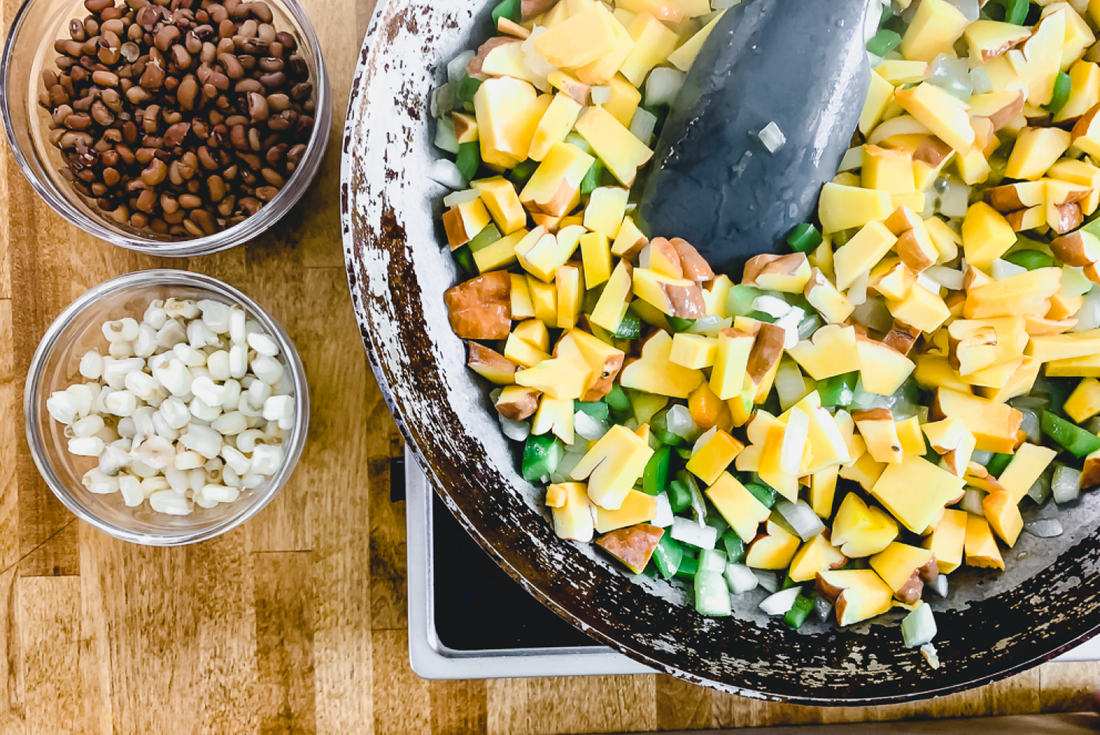
Hominy with Beans & Squash | Wellspent Market
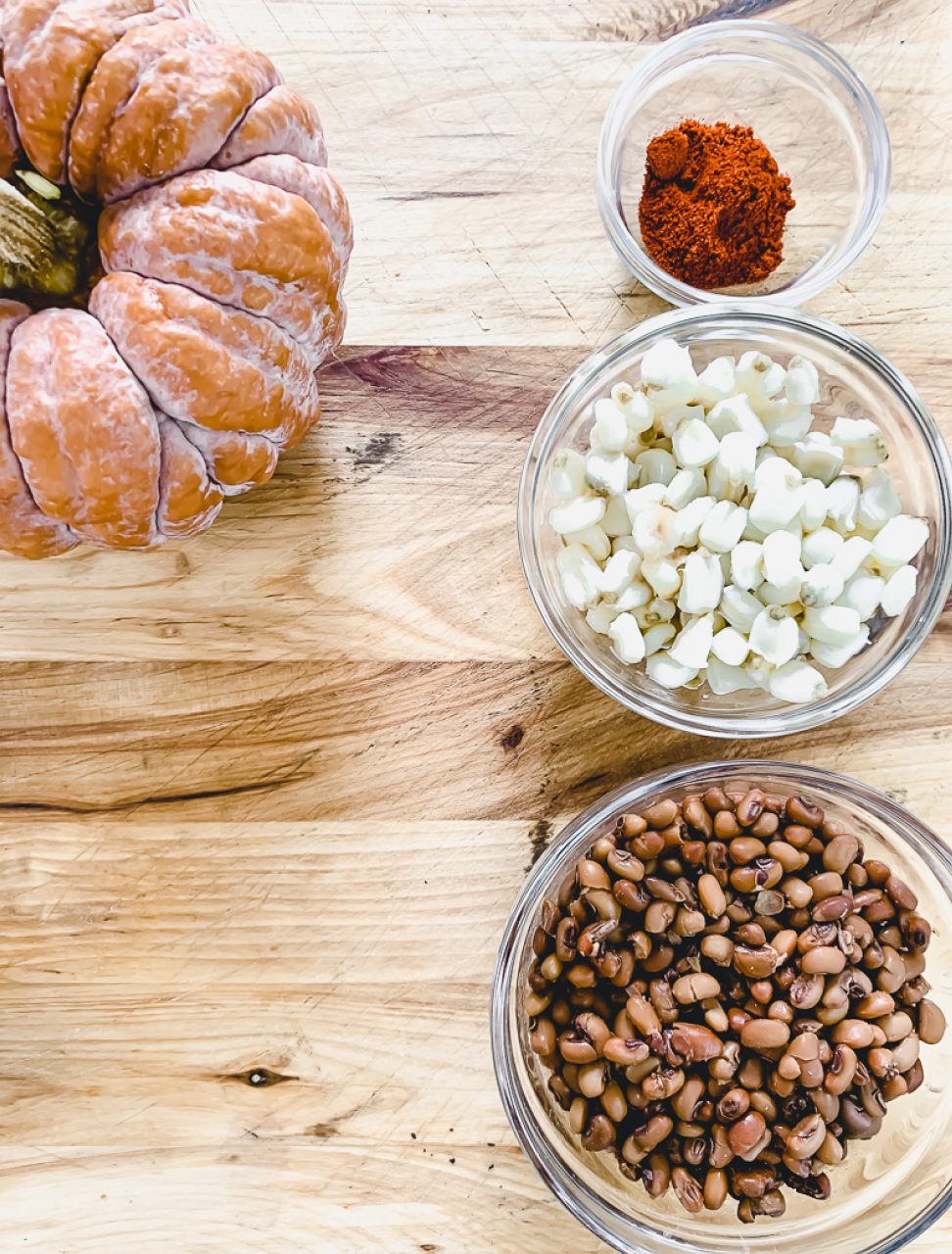
Corn originated in central America, and the indigenous people made it more nutritious with a cooking process called nixtamalization.
Dried corn kernels are simmered in water and calcium hydroxide, and the process both reduces some potentially harmful toxins created by some corn funghi and unlocks the niacin in the corn. Nixtamalized corn also tastes better.
The treated corn kernels are called nixtamal or hominy, a term that reflects Native Americans’ use of nixtamalization. These days grocery stores mostly stock canned hominy, although the dried version seems to be coming back as cooks explore southwestern and Mexican dishes.
Here in Portland, we’re lucky to have Three Sisters Nixtamal. This small SE Portland business sources heirloom corn from Mexico and Arizona, nixtamalizes it, and makes the best tortillas in town. They also offer masa for cooks who want to make their own tortillas, sopes, or gorditas. And they sell fresh hominy that doesn’t need to be rehydrated.
While Three Sisters’ hominy make great pozole, the celebratory, chile-spiked stew of Mexico, it’s good anywhere you want chewy, slightly sweet corn to round out a dish. I made this skillet-cooked, stew-like vegetable combo to eat alongside roast pork, but it’s be good under a piece of fish, baked into a cheesy casserole, or just served in a big bowl all by itself.
What You'll Need
Ingredients
- 1 1/2 cup of Hominy
- 2 cups of Field Peas, cooked
- 1 onion
- 1 celery stalk
- 1 small green bell pepper
- Novo Frantoio olive oil, as needed
- Italian fine sea salt, to taste
- 1 Winter Squash
- Burlap & Barrel's Silk Chili, to taste
- Splash of Katz Gravenstein Apple Cider Vinegar
Equipment
- 1 Chef's Knife
- 1 Cutting Board
- 1 Heavy Skillet
- 1 Slotted Spoon
- Measuring Cups
- Measuring Spoons

"I made this skillet-cooked, stew-like vegetable combo to eat alongside roast pork, but it’s be good under a piece of fish, baked into a cheesy casserole, or just served in a big bowl all by itself."
~ Jim Dixon, founder Wellspent and Real Good Food
What you'll have to do
Step 1
The hominy takes a while, so start early or make it the day ahead. You’ll also want some cooked beans, so make a batch of Camellia field peas in the oven while the hominy cooks. Simmer a cup and a half of hominy in lightly salted water until tender (it’ll still be a little chewy), 45 minutes or more. Store in the refrigerator with its cooking water.
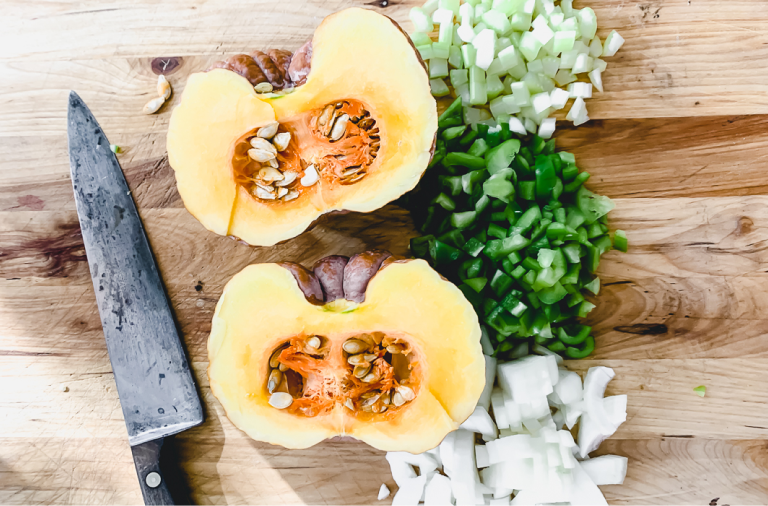
Step 2
Chop an onion, a stalk of celery, and a small green bell pepper; cook them in extra virgin olive oil with some sea salt until soft, about 5 minutes. Cut your favorite winter squash (I like the round, pumpkin-lie varieties like red kuri or kabocha) into bite-sized chunks.
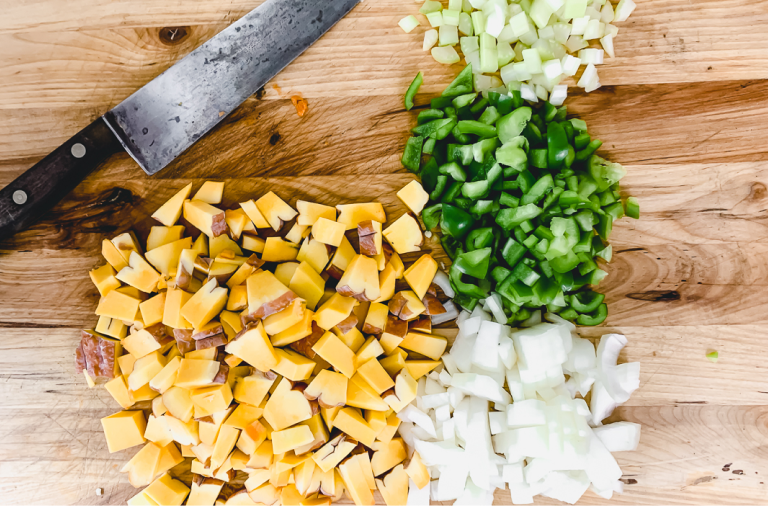
Step 3
Add about 2 cups of squash cubes to the skillet with about a quarter cup of the hominy cooking liquid (or just water) and cook, stirring occasionally, until the squash is tender, about 20 minutes. Add more water if needed, but most of it should be gone by the time the squash is ready.
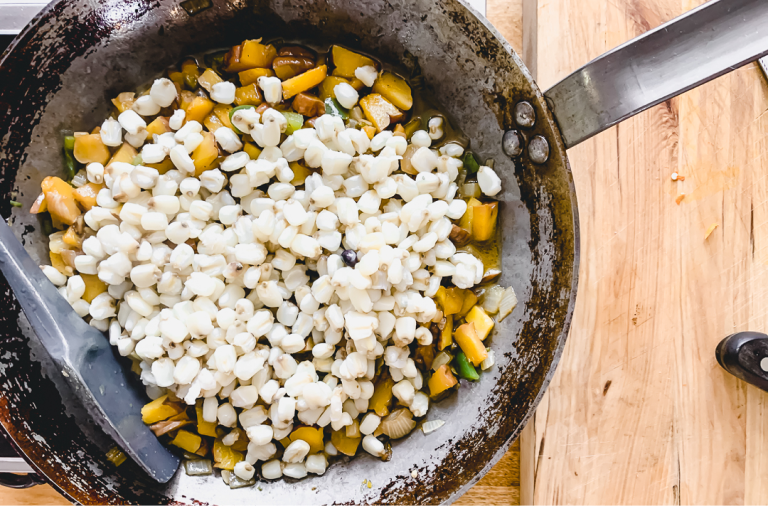
Step 4
Add the cooked hominy and about the same amount of cooked field peas to the skillet, and season to taste with Burlap & Barrel Silk Chili and sea salt.
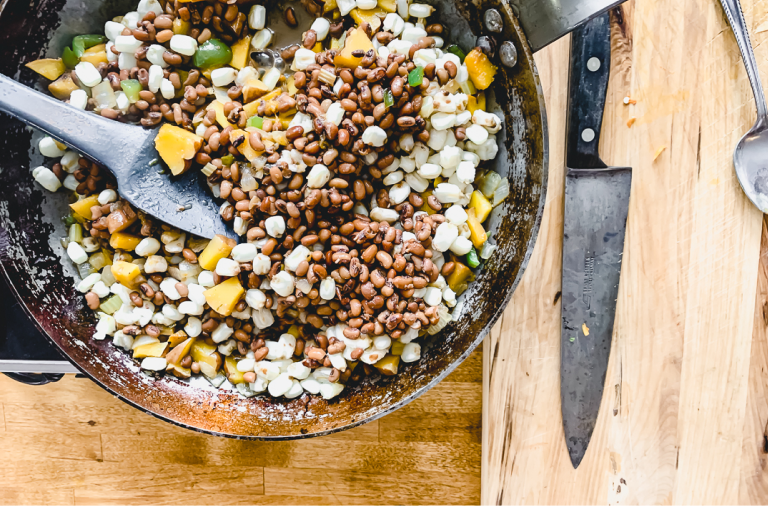
Step 5
Let everything cook together for another 5 minutes, add a splash of apple cider vinegar, taste and add salt if needed.
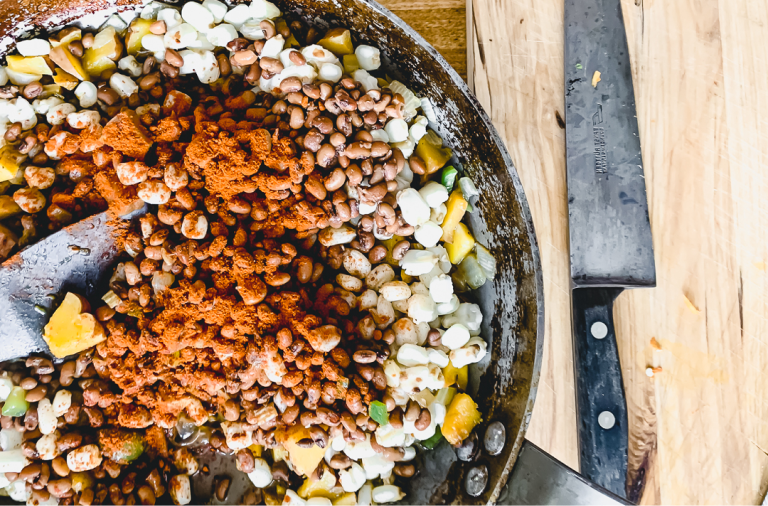
More recipes
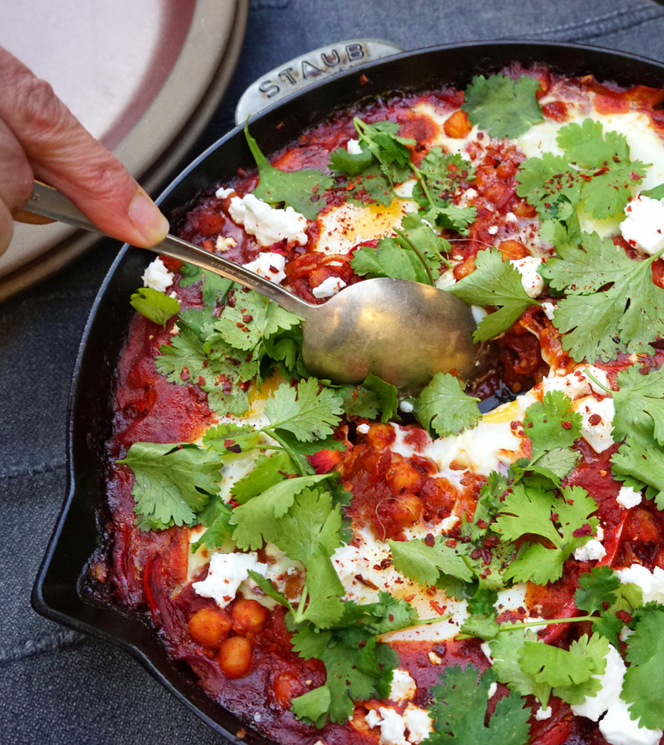
Shakshuka with Garbanzos & Feta
In Israel it’s usually breakfast, but our version of eggs cooked in tomato sauce works for any meal.
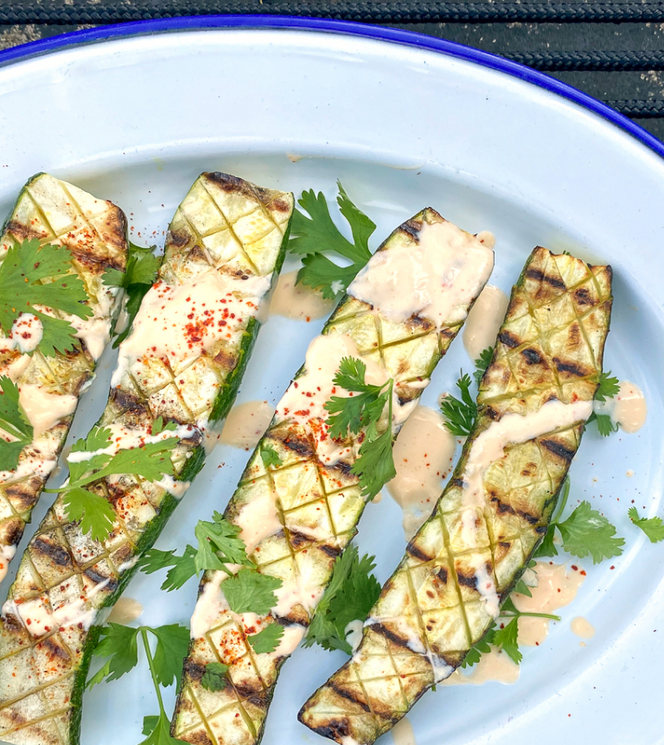
Grilled Zucchini with Spiced Lime Sour Cream
Adapted from Aaron Hutcherson, the tangy sour cream makes simple zucchini special.
